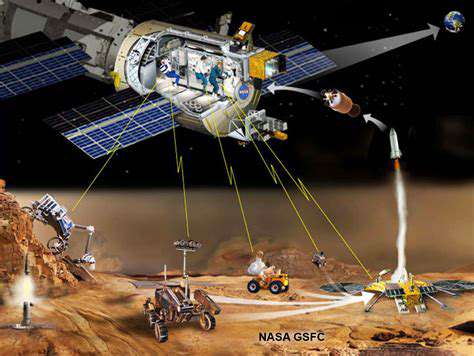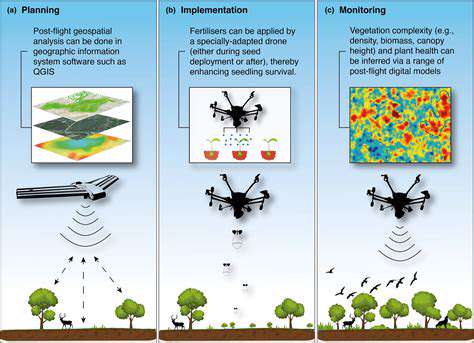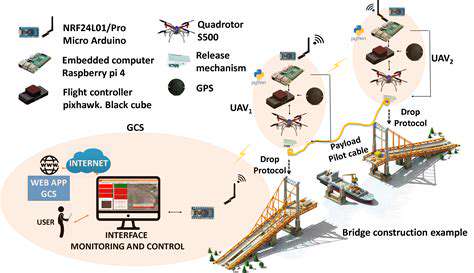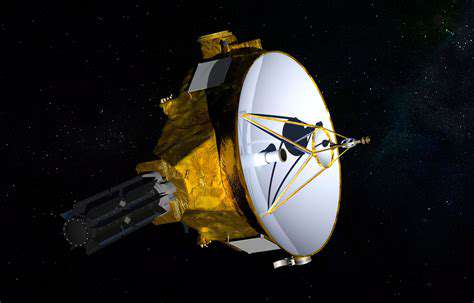Understanding Solar Wind
Solar wind is a continuous stream of charged particles, primarily electrons and protons, that emanate from the Sun. This constant outflow, originating from the Sun's corona, is a crucial component of the heliosphere, the protective bubble of magnetic field and plasma that surrounds our solar system. Understanding the properties and behavior of solar wind is essential for comprehending space weather events and their potential impact on Earth and other planets within our solar system.
The composition and velocity of solar wind vary depending on factors like solar activity. During periods of high solar activity, the solar wind can be significantly faster and more turbulent, potentially causing disruptions to satellite communications and power grids on Earth.
The Parker Solar Probe's Mission
The Parker Solar Probe, a groundbreaking NASA mission, is designed to directly study the Sun's atmosphere, the corona. This includes collecting data on the solar wind's properties as it travels outward from the Sun. By getting closer to the Sun than any spacecraft before it, the probe is providing unprecedented insight into the mechanisms that accelerate and shape the solar wind.
The probe's instruments measure various parameters of the solar wind, including its speed, density, temperature, and magnetic field. This detailed data allows scientists to better understand the complex processes that drive solar wind and its influence on the space environment.
Solar Wind's Impact on Earth
The solar wind, despite its vast distances, has a profound impact on Earth. It interacts with our magnetosphere, the region of space surrounding Earth dominated by its magnetic field. This interaction can lead to geomagnetic storms, which can disrupt radio communications, navigation systems, and even cause power outages. Understanding how solar wind interacts with Earth's magnetic field is critical to mitigating its potential effects.
Furthermore, the solar wind carries with it information about the Sun's activity. By studying the properties of the solar wind, scientists can gain valuable insights into the Sun's internal processes and forecast its future behavior, which is crucial for space weather predictions and protecting our technological infrastructure.
Composition and Acceleration of Solar Wind
The solar wind isn't a uniform stream; its composition and properties vary significantly. Understanding the different components of the solar wind, including the concentration of ions and their velocities, is vital to understanding how it's accelerated from the Sun's corona. This acceleration is a complex process, still under investigation, but it likely involves the Sun's magnetic field and its interactions with the plasma in the corona.
The Parker Solar Probe's data is shedding light on the mechanisms responsible for accelerating the solar wind, providing crucial clues about the Sun's dynamic nature and its influence on the surrounding solar system.
Impact on Space Weather Prediction and Our Understanding of the Sun

Improved Accuracy in Forecasting
Advancements in space weather prediction are critically important for safeguarding technological infrastructure and human activities. Improved forecasting models, incorporating more sophisticated data analysis techniques, will inevitably lead to greater accuracy in predicting geomagnetic storms and other space weather events. This enhanced accuracy will allow for more timely warnings and proactive measures to mitigate potential disruptions. The ability to predict these events with greater precision will save lives and protect billions of dollars in infrastructure.
By integrating real-time observations from various space-based and ground-based instruments, models can refine their predictions. This integration is crucial for a comprehensive understanding of solar activity and its impact on Earth's magnetic field. The more data we can collect and analyze, the more precise our predictions will become. This will enable better resource allocation and preparedness for space weather events.
Enhanced Understanding of Solar Processes
A deeper understanding of solar processes is essential for improving space weather prediction. This involves studying the complex interactions within the Sun, including the dynamics of solar flares, coronal mass ejections, and other phenomena that drive space weather events. Researchers are actively working to unravel the intricacies of these events to create more accurate models.
This research also includes investigating the long-term trends in solar activity. Understanding these cycles is crucial for predicting future space weather events and their potential impact on Earth. Long-term forecasting is a significant challenge, but crucial to developing strategies for mitigating future risks. By studying the historical patterns, scientists can potentially identify recurring patterns and improve their predictive capabilities.
Mitigation Strategies and Preparedness
Improved space weather prediction enables the development of effective mitigation strategies to lessen the impact of severe space weather events. This includes developing robust strategies for protecting critical infrastructure like power grids, communication networks, and navigation systems. Furthermore, better prediction models can inform the development of procedures for minimizing disruptions to these essential systems.
Preparing for space weather events is crucial for minimizing damage and ensuring continuity of essential services. This preparedness includes developing contingency plans, testing emergency protocols, and educating the public about the potential risks. By implementing these strategies, we can significantly reduce the impact of space weather events on our modern society.
Economic and Societal Benefits
The benefits of improved space weather prediction extend far beyond technological safeguards. Precise predictions will reduce economic losses associated with disruptions to essential services. Better preparedness and mitigation strategies can significantly decrease the financial burden of space weather events. This is especially important in a world that relies heavily on technology.
Improved prediction models contribute to a safer and more reliable global infrastructure. This translates to a significant societal benefit, reducing the risk of widespread disruptions and ensuring the continued functionality of essential services. The ability to predict space weather events is crucial for modern life.












